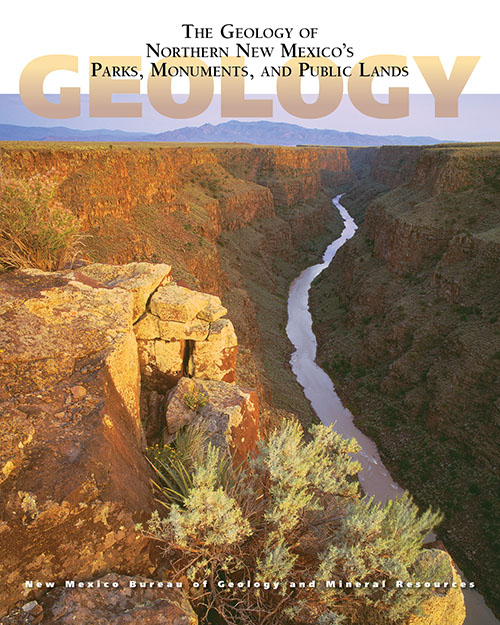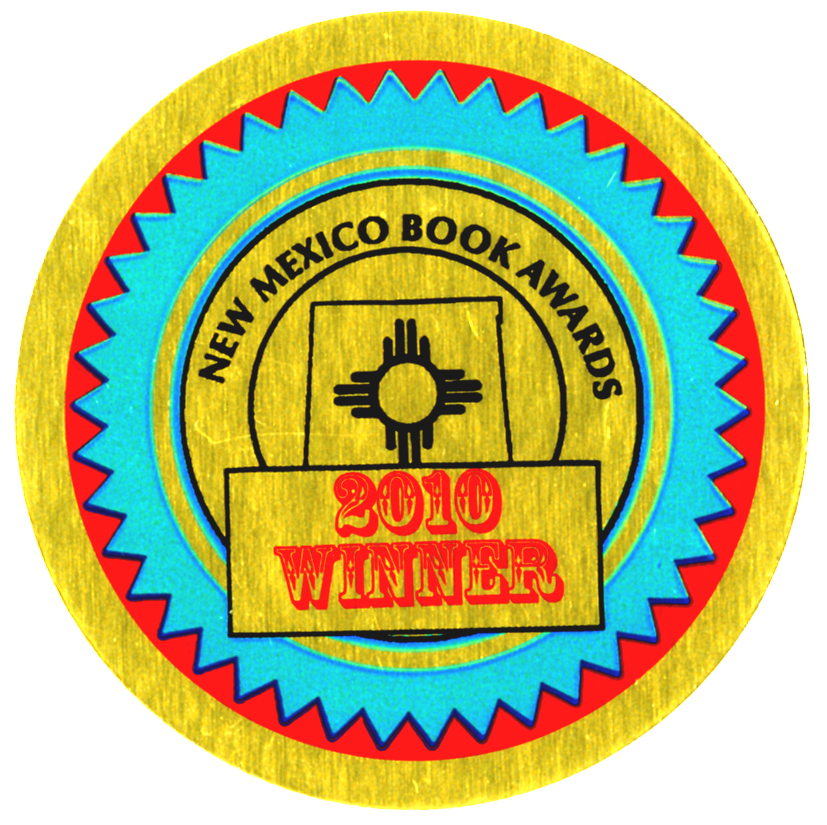
The Geology of Northern New Mexico's Parks, Monuments, and Public Lands

Edited by: L. Greer Price
2010 (reprinted 2020)
Few places in the U.S. boast as rich a diversity of landscape and public lands as northern New Mexico. Here in one volume is an authoritative overview of the geology of these parks, monuments, and public lands, with information on the regional setting, the rock record, and the most prominent geologic features. The book includes chapters on nine national parks and monuments, seventeen state parks, and many of the most popular Bureau of Land Management and U.S. Forest Service units in this part of the state. Also included are chapters on two of our newer units, the Valles Caldera National Preserve and Kashe-Katuwe Tent Rocks National Monument. With nearly 300 full-color geologic maps, graphics, and photographs, the book is a perfect introduction to the some of New Mexico's most significant geologic landscapes.
380 pages, full color 8" x 10" paperback with sewn binding.
ISBN: 9781883905255
$29.95
Buy
Now
Third revised reprinting
Download
Free sample chapter — Ghost Ranch (4 MB PDF)
The book is the first of two volumes on the geology of New Mexico's public lands — the second, published in 2020, deals with the southern half of the state.
Contents
Part 1: The Colorado Plateau
- El Malpais National Monument
- Bluewater Lake State Park
- El Morro National Monument
- Red Rock State Park
- Mount Taylor
- Cabezon Peak
- Chaco Culture National Historical Park
- Aztec Ruins National Monument
- Ship Rock and the Navajo Volcanic Field
- Bisti/De-Na-Zin Wilderness
- Navajo Lake State Park
- Heron Lake and El Vado Lake State Parks
- Ghost Ranch and Vicinity (free sample chapter)
Part 2: The Jemez Mountains and the Valles Caldera
- Valles Caldera National Preserve
- Bandelier National Monument
- Kasha-Katuwe Tent Rocks National Monument
- Jemez Historical Site
- Battleship Rock
- Soda Dam
- Fenton Lake State Park
- Gilman Tunnels
Part 3: The Rio Grande Rift
- The Rio Grande Gorge
- The Sandia Mountains
- Petroglyph National Monument
Part 4: The Southern Rocky Mountains
- Wheeler Peak Wilderness
- Latir Peak Wilderness
- Enchanted Circle Scenic Byway
- Valle Vidal
- Pecos Wilderness
- Hyde Memorial State Park
- Coyote Creek State Park
- Pecos National Historical Park
- Morphy Lake State Park
- Cimarron Canyon State Park
- Eagle Nest Lake State Park
- Villanueva State Park
Part 5: The Great Plains
- Capulin Volcano National Monument
- Clayton Lake State Park
- Fort Union National Monument
- Storrie Lake State Park
- Kiowa and Rita Blanca National Grasslands
- Sugarite Canyon State Park
- Conchas Lake and Ute Lake State Parks
- Santa Rosa Lake State Park
Awards

2011 Southwest Book Design & Production Award Winner for Guide and Travel
2011 Southwest Book Design & Production Award Finalist for Scholarly & Technical

2010 New Mexico Book Award for Anthropology/Archaeology/Science
Comments
“Your new book on the Geology of New Mexico’s Parks, etc. is an absolute knockout! It is handsome, beautifully written and organized, wonderfully informative, and it provides a great service. It is a great achievement, and I am utterly delighted to have a copy—which I will cherish.”
— William deBuys, award winning writer and conservationist
Reviews
New Mexico Rocks! — “The title of this newly published volume has a textbook ring to it. But its easy-to-read text, maps and charts — and awe-inspiring photography — are convincing evidence that this is a book for the general reader.”
—David Steinberg, Albuquerque Journal staff writerBook explores New Mexico geology and landscapes — “For travelers who've stared slack-jawed at the jagged ramparts of Shiprock or the sweeping vista of the Valles Caldera and wondered how New Mexico's spectacular landscapes were formed, a new book holds the answers. The 372-page volume, The Geology of Northern New Mexico's Parks, Monuments and Public Places, is part travel guide, art book and geology text.
Published by the New Mexico Bureau of Geology and Mineral Resources, which is part of New Mexico Tech, the book rolls back time tens of millions of years and explains the powerful forces that shaped the state. It offers a lesson for nonscientists about nature's tugging and pulling, pushing and shoving, and the relentless erosion of rock.”
— Barry Massey, The Associated Press


